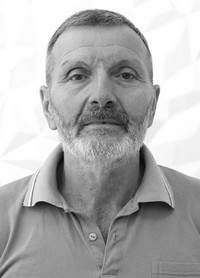Pokazannikova – Maximal and repeated muscular efforts: ergometric and physiological evaluation criteria
Keywords:
muscular strength, isometric contractions, maximal strength reaching time, maximal strength keeping time, lactic acid, acid-base balance.Abstract
Objective of the study was to analyze strength control patterns for isometric contractions of the rectus femoris in a weightlifting model testing experiment by repeated 5-second maximal strength tests and 1-minute maximal strength keeping tests.
Methods and structure of the study. We sampled for the strength training system testing experiment the 18-20 years old elite sambo fighters (n=8, Candidate Masters of Sports and Masters of Sports) 174-182cm tall and 66-82 kg heavy. The tests were run in laboratory using a pressure platform.
Results and conclusion. The pre- versus post-experimental 5s maximal strength tests of the isometric contractions of rectus femoris found significant progress in the following test rates: peak force by 10.4%; maximal strength by 13.3% and force impulse by 15.5%. The pre- versus post-experimental 1min maximal strength keeping tests found significant progress in the following test rates: peak force by 11.2%; maximal strength by 15.2%; maximal strength reaching time by 14.6%; and the 97% maximal strength reaching time by 15.8%. The strength variation analysis found significant progress in the maximal strength, maximal strength reaching and keeping times with the maximal strength control and fall patterns.
References
Verkhoshanskiy Y.V. Fundamentals of special strength training in sports. 2nd ed., rev, sup.. M.: Fizkultura i sport publ.. 1977. 215 p.
Volkov N.I. Bioenergetics of human strenuous muscular activity and ways to improve athletes’ performance. Doct.diss. (Biol.). M., 1990. 101 p.
Zatsiorskiy V.M. Athletes’ motor qualities: (research on theory and methodology of education). Doct. diss. abstract (Hab.).. M., 1969. 71 p.
Henry F.M., Trafton J.R. The velocity curce of sprint running with some observations on the muscle viscosity factor. Res. Quart. Amer. Ass. Health Phys. Educ. 1951. P. 409–422.


